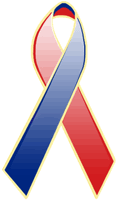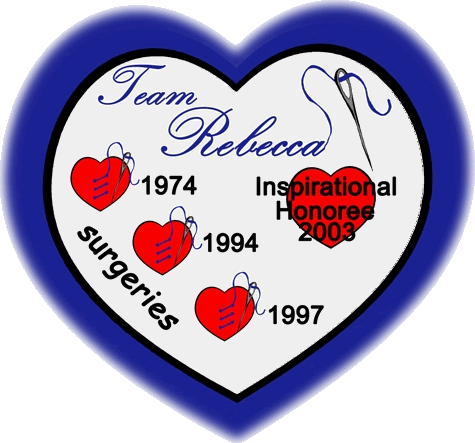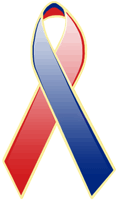 |
 |
 |
 |
 |
 |
|
“Without Research I Wouldn’t Be Here” |
|
|
Please Help save a life - Like mine
|
My name is Rebecca. I am now in my 50's and have spent most of my life in Upstate, NY. I have congenital heart disease. For the most part while growing up I had fun, but I also became frustrated as I realized that I was different. While attending a clinic held by Timothy Howard, MD, he told my mother that I could not receive the immunizations because there was “something wrong with (my) heart”. And that proved to be general knowledge at that point. “Something wrong.” Throughout 1972-1973, I was examined by many local pediatricians as I displayed extreme shortness of breath with cyanosis. My family doctor, James Gallo, MD, was repeatedly advised that no cause for concern was found. At my mother’s request, Dr Gallo referred me to Reda M. Shaher, MD, Ph.D.; Cardiologist, Developer of the newly formed (1967) Division of Pediatric Cardiology at Albany Medical Center, a Clinical Professor of Pediatric Cardiology and founding partner in his practice of pediatric congenital heart disease. On July 16, 1973, Dr. Shaher diagnosed a complex cyanotic congenital heart disease with pulmonary atresia and a ventricular septal defect. Later, through more defining research, this would be called tetralogy of Fallot and pulmonary atresia. I was 5 years old. May 15, 1974, I was pulled from my kindergarten class for cardiac surgery. A Blalock-Taussing shunt increased the amount of blood reaching my lungs and decreased the cyanosis. At this point, Dr. Shaher said “Rebecca was not correctable; but perhaps in 20 years research will find a way to correct her condition.” How amazingly accurate this prediction proved to be. The next school year, even after surgery, walking up a flight of stairs was hard, I physically couldn’t do it. I couldn’t keep up with my classmates and they didn’t understand why any more then I did. My family adjusted their pace to mine and that must have helped. I got a 3-speed bike when I was very young because I could not pedal a “normal” bike. So here was this bike, bigger than me with training wheels; but I could now ride up and down the street with my friends. My mom always encouraged me to do what I could and stop when I needed. You find things that you are good at and you excel in them. So I got involved with doing puzzles during the winter months, flying kites in the spring, riding my bike all over town during summer vacations, but most of all, I love music. Mr. Harris, my music teacher, took the time to help me find an instrument I could play. We tried them all and I excelled in drumming. During my school years I went to All County Music Festivals and to All State Music Festivals. 23 years later I still play. Semi-annual examinations by Dr. Shaher and cardiac catheterizations during the following years constituted my cardiac care. I was always pronounced “in excellent condition for the condition I was in.” In 1991, now 23, my blood flow to my lungs began to show a decrease in effectiveness. I began monthly hematocrit and hemoglobin bloodwork and regular exchange transfusions because of my high hematocrit. Research still had not found a more effective response to my cardiac condition. As a way of protesting these difficult exchanges, I teasingly asked my doctor “When are you going to cure me?” Dr. Shaher later admitted that that question, raised in humor, created a guilt because he had not yet “found a way”, but also a determination to find one. In December 1991, I was the focus of a discussion of the Surgical Colleagues at a Pediatric Cardiology Conference at Albany Medical Center. It was learned that research at Boston Children’s Hospital had developed a conduit to correct patients with my diagnosis, if the vessels were large enough. After Twenty years research is closing the gap. In July 1994 I scheduled an appointment with Dr. James Lock of Boston Children’s Hospital. Dr. Lock is Chairman of the Department of Cardiology at the Children’s Hospital, Cardiologist-in-Chief; and a Professor of Pediatrics at Harvard Medical School. Advanced cardiac catheterization discovered I did qualify for surgery. It also showed previously undetected damage to my diaphragm caused during the 1974 surgery. Dr. Lock advised us that my mortality rate was 1-2% and my life span was shortened to 10 years. This had come to my family and myself as a total shock. I felt fine. I was dating a wonderful man, working full time as a computer technician, playing in community bands. How could this be, how could I be this “ill” and not know it! Time was running out but research was catching up. On October 10 -11, 1994 at age 26, I was surgically repaired at Boston Children’s Hospital. The first day, I underwent a catheterization procedure to close off all ancillary collateral arteries before the repair surgery. This was accomplished with the use of coils, which were transported to the arteries via a catheter, a procedure recently developed. Over the years, my body had created an unusual collateral artery structure that was supplying the left lung by a “tortuous” route. During this catheterization a situation developed because a collateral had grown too large for the coils to close. Dr. Lock, through research monies, had invented a new device, commonly called a “clamshell umbrella” and officially known as a Cardio-Seal. A high-risk clinical trial was in place at Children’s, and there were only 500 participants to date. This clamshell was used to close ventricular septal defects through cardiac catheterization. Dr. Lock needed to use his clamshell to close my exceptional collateral and had to obtain FDA approval during the procedure as it had never been used or previously approved for use in this manner. In the December 7th, 2001 Observer Dispatch, it was reported that the CardioSeal had been approved by the FDA for repair of septal defects in children (a hole in the heart is congenital). In June 2002 the Observer Dispatch included another article in the mvhealth section which reported the “breakthrough in cardiovascular medicine”. The second day, John Mayer, MD was my surgeon. He is a Senior Associate in Cardiac Surgery and an Associate Professor of Surgery at Harvard Medical School. In surgery, I had a 20-mm aortic homograft implanted, ligation of the Blalock-Taussig shunt, and a 16-mm Goretex graft between the pulmonary arteries. Dr. Mayer and Dr. Lock both expressed the surgery was more successful than had been anticipated because of my otherwise outstanding stamina. We think this stamina is the reason I did not recognize the severity of my illness. All my life I did all I could, tried all that I wanted, and didn't stop until my body told me to stop. After this surgery I saw a difference, when for the first time I blew up a balloon – right out of the package, no stretching, no one else blowing it up first. ME, I blew that balloon up. I could never do that before. It was awesome. In March 1996 an echocardiogram showed a residual large patch defect. My VSD was too large and too close to the aorta to use the “clamshell”, and the patch had pulled stitches. Again I had to take time off from work; this time I was scared. I really don’t know why, I think it was just because of frustration. The “why me” syndrome was going on deep inside my mind. I didn’t want to do this, I felt the transcatheter was not going to be able to perform the closure and I would need another open heart but everyone kept saying that wasn’t true, it was just in my head. January 28th I re-entered Boston Children’s Hospital for a transcatheter closure with the Cardio-Seal. Again, it could not be used. The next day I underwent open-heart to repair the residual. I continue to have a small residual ventricular septal defect that does not warrant further repair. I am in good health. Dr. Shaher died suddenly on December 6th, 1997, which devastated me. He was my life-long doctor and hero. Dr. Matthew Farina became my cardiologist for the next 11 years, he retired in 2007. He was a 4th year medical student when he met Dr. Shaher in 1967and joined him in practice soon after. Today Dr. Doyle continues my cardiac care. Dr. Lock continues to explore new approaches to catheter therapy. In 2015 I started having some issues with retaining water and lost all energy. Dr. Doyle sent me back down to Boston Children's Hospital. It was feared that the devices that were implated in 1994 were old and needed to be replaced or perhaps I had narrowing of the arteries or blockage. It turned out that that wasn't the case, Everything from 1994 are old, but working just fine. However because of the 20 year gap between 1974 and 1994 some damage was done and I now have Pulmonary Hypertension. Which is being maintained by a new medication called Letaris. After my last surgery, I wanted to walk America’s Greatest Heart Walk / Run, but was afraid I couldn’t walk the full 3 miles. In 1998 the AHA helped me complete that dream. They allowed me to ride in the lead car to heartbreak hill. From that point I walked to the finish line with my husband, Aaron, my mother, Marlene, my sister Melissa, and friends. What a great feeling. I wanted to “help” find a cure, was fighting back and was walking in memory of Dr. Shaher. In 1999 to current I complete the entire 3 miles. I’m really tired at the end of the walk, but it feels great to cross that finish line. We believe that my life began again on October 11th, 1994. I am quoted in the February 24th, 2002 Observer Dispatch, “If not for the support from people all over the valley, the technology would not have been there to catch up to me, and I wouldn’t be here.” I want to say Thank You to everyone that participates. Each year I see more and more survivors. We are fighting back and slowly winning the war. See you during the walk. |